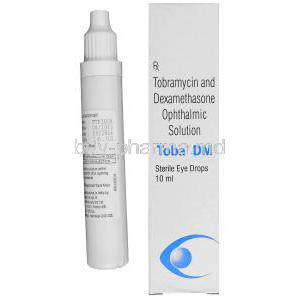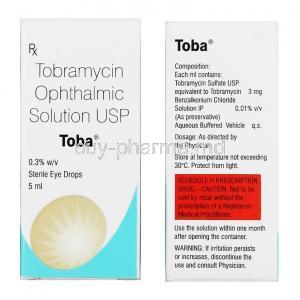Hypromellose Eye Drops
- Introduction
- Uses of Hypromellose Eye Drops
- Off-Label Uses
- How Hypromellose Eye Drops Work
- Composition of Hypromellose Eye Drops
- Dosage and Administration
- Administration to Elderly
- Administration to Pregnant Women and Nursing Mothers
- Administration to Children
- Side Effects
- Common Side Effects
- Warnings and Precautions
- Important Precautions
- Careful Administration
- Interactions
- Contraindications
- Overdosage
- Storage and Handling Precautions
- Conclusion
Introduction
The term "hypromellose" may seem unfamiliar. It plays a crucial role in taking care of our eyes. Hypromellose eye drops are effective in soothing and protecting the surface of our eyes, especially considering the increased use of screens nowadays. This article explores the benefits of hypromellose eye drops, ranging from regular eye care to specific medical situations.
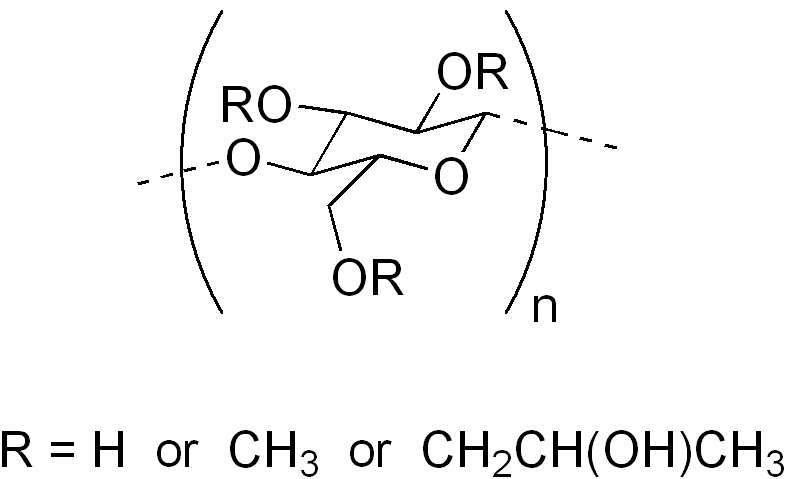
Uses of Hypromellose Eye Drops
Treating Dry Eyes
Dry eyes2 are a problem that causes discomfort and harms our vision. Hypromellose eye drops can effectively address this issue by replicating the lubrication of our eyes and creating an ideal environment for them. Here are some benefits of using hypromellose for eyes:
- Immediate Relief: The texture of the eye drops provides soothing.
- Lasting Effect: These drops hydrate the eyes for an extended period, reducing the need for frequent application.
- Gentle on the Eyes: Most formulations are free from preservatives and irritants, ensuring they do not cause any irritation.
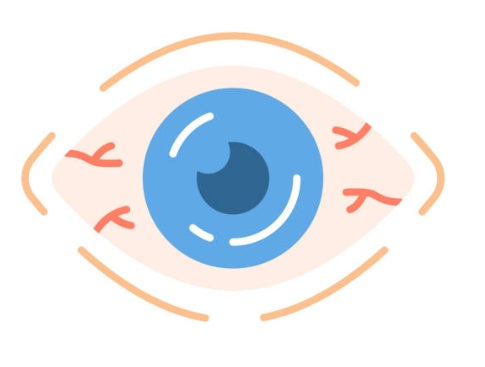
Lubrication for Artificial Eyes
The field of eyes has seen significant progress, but the issue of lubrication remains a top concern. Hypromellose is a lubricant to reduce friction between the artificial eye and the socket. This helps create an environment for tissue health and minimizes the chances of infection or irritation.
Post-Surgical Eye Care
Post-operative care for the eyes after surgery is critical. Hypromellose eye drops have a purpose; they help ease any discomfort and promote healing of the eye's outer layer. Additionally, their sterile formula prevents any risk of contamination, making them even more beneficial for post-surgical eye care. These qualities make hypromellose a valuable tool in the range of treatments for eye care after surgery.
Pre-Examination Lubrication
Before undergoing eye examinations like slit lamp biomicroscopy or measuring intraocular pressure, it is essential to lubricate the eyes as a necessary initial step. Applying hypromellose eye drops helps improve the condition of the eye surface, which in turn enhances the accuracy and dependability of results. In summary, using these drops before examinations is not an additional measure but a significant factor in gathering precise medical information.
Off-Label Uses
Allergic Reactions
Although hypromellose eye drops1 are not specifically designed for treating allergies, they have unexpectedly reduced the symptoms. These eye drops act as a barrier on the cornea's surface, relieving itchiness and redness commonly associated with allergies. Additionally, their lubricating effect may assist in reducing inflammation. They are often used alongside antihistamines to provide relief as part of a combined treatment approach.
Computer Vision Syndrome
In this era, many people experience Computer Vision Syndrome (CVS), commonly known for causing eye strain and dryness from excessive time staring at screens. While hypromellose is not a cure-all for CVS, it effectively helps alleviate dryness. Provides relief from one of the most troubling symptoms of the syndrome.
-clipart.jpg)
Contact Lens Lubrication
Hypromellose eye drops have a use. They can be used to lubricate contact lenses. These drops help reduce the friction between the lens and the eye's surface, making it more comfortable to wear them.
How Hypromellose Eye Drops Work
Mechanism of Action
Hypromellose eye drops work by stabilizing the film. In terms, they increase the thickness of the tear film, which helps to improve its lubricating and moisturizing effects. This is important for maintaining an environment for the eyes 4.
Importance of Moisture Retention
The surface of our eyes is like a system, and it needs the right amount of moisture to work properly. Hypromellose helps maintain this balance by keeping the water in, preventing dry eye symptoms. Essentially, this ingredient acts like a sponge that locks in moisture and stops it from evaporating.
Composition of Hypromellose Eye Drops
Active and Inactive Ingredients
The main ingredient in these eye drops is hypromellose, as the name suggests. However, they also contain components called excipients that have different roles. These can include:
- Preservatives like benzalkonium chloride
- Buffers to maintain the pH level
- Isotonic agents such as sodium chloride to balance osmolarity
Comparison with Other Eye Drops
When compared to other eye drops, such as saline solutions or those containing carboxymethylcellulose, hypromellose often shows thickness and the ability to stay in the eye. This leads to a lasting effect that reduces how often it needs to be applied and improves overall patient adherence.
Dosage and Administration
Standard Dosage Guidelines
Regarding eye care, it is crucial to be precise in the dosage and administration1. Usually, hypromellose eye drops are used following guidelines. For adults, putting 1 to 2 drops into each eye up to three times a day is usually enough for relief from symptoms. The critical aspects of the dosage include:
- Frequency: Generally, it is recommended to use the drops 2 3 times daily, although this can vary based on medical advice.
- Volume: Use 1 2 drops in each eye.
- Application: Administer the drops with your head tilted back for distribution.
Special Cases: Post-Surgery and Eye Examinations
Doctors sometimes use personalized dosage plans in situations like after surgery or before medical tests. The decision to increase the dose or frequency depends on how severe the condition is and what the diagnostic procedures require.
Administration to Elderly
Dosage Adjustments
Our eyes may require a careful approach when using hypromellose as we age. Although the active ingredient is generally safe, the physiological changes in patients may necessitate dosage adjustments. These changes account for issues with the tear film or a slower metabolic rate.

Specific Concerns
It is essential to pay attention to older patients taking multiple medications simultaneously, as there is a possibility of drug interactions, although it is minimal. Additionally, it is crucial to assess renal function since aging kidneys can affect how hypromellose works in the body.
Administration to Pregnant Women and Nursing Mothers
Precautions
While hypromellose is generally considered safe, it's essential to be cautious when giving it to pregnant or breastfeeding women. It is recommended to consult with a professional before starting any treatment. Since there aren't studies on its potential effects on fetal development, it's better to avoid caution and seek medical advice.

Data on Safety
Based on the data, hypromellose does not pass into breast milk and is only minimally absorbed by the body. However, since there aren't any long-term studies, it's challenging to come to a definite conclusion regarding its safety.
Administration to Children
Pediatric Dosage
Children's eyes have characteristics that can differ from those of adults. When it comes to medication, the recommended dosage for individuals is usually more cautious, with just one drop per eye, and it should be given under the supervision of an adult. The frequency of administration is typically similar to that of adults unless there are any circumstances.

Safety Concerns
In environments, prioritizing safety is of the utmost importance. Hypromellose, known for its absorption into the body, is generally considered safe for children. However, if any unexpected reactions occur, it's crucial to stop using it and seek advice from a healthcare professional.
Side Effects
List of Common Side Effects
While hypromellose eye drops are generally considered safe, users must be aware of side effects1. These side effects are usually temporary.
- Mild irritation, which can cause a brief stinging or burning sensation.
- Chance of experiencing vision, but this often resolves on its own and doesn't last long.
- Redness typically disappears when the eye drops are stopped, or their frequency is reduced.
Duration and Severity
The side effects, in terms of how they last and how severe they are, usually only last for a short time, typically just a few minutes after using the product. However, if symptoms persist or worsen, it's important to consult an eye specialist. It's essential to differentiate between mild and severe side effects so that appropriate measures can be taken promptly.
Common Side Effects
Mild Irritation
Feeling a bit irritated after applying something is quite common. Usually, it's not a deal and goes away on its own. If the irritation keeps worsening or doesn't go away, it might be a sign of a more severe problem, and you should consider seeing a doctor.

Blurred Vision
Blurred vision is another temporary side effect. It typically improves as the eyes absorb the hypromellose, allowing visual clarity to return. Although it usually goes away on its own, any extended vision period should not be ignored and evaluated promptly.
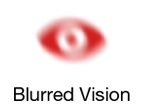
Warnings and Precautions
Interactions with Other Medications
Although hypromellose is generally considered safe, it is still possible to interact with medications. Therefore, following a staggered administration schedule is advisable if you are using eye medications simultaneously. This will help prevent any interactions. For example:
- If you take glaucoma medications, hypromellose might dilute their concentration.
- Co-administration of antihistamine eye drops with hypromellose could potentially reduce their effectiveness.
It's essential to be cautious and mindful of these interactions2 when using different eye medications together.
Importance of a Patch Test
Before including hypromellose in your eye care routine, it is often recommended to perform a patch test. This involves applying a drop and carefully monitoring any adverse reactions for about 24 hours. This step can help prevent potential issues, including mild irritation or severe allergic reactions.
Important Precautions
When to Avoid Use
In the world of pharmaceuticals and treatments, it is crucial to prioritize caution. There are situations where avoiding certain medications or therapies becomes necessary. These situations can include, but are not limited to:
- Allergic Reactions: If you have a known allergy to any ingredients in the medication.
- Contradictory Conditions: Conditions that could worsen health issues.
- Concurrent Medications: Using conflicting medications simultaneously can have harmful effects.
It's not a matter of being careful; it's essential to be aware of these limitations to prevent potential harm.
Situations Requiring Medical Guidance
Seeking advice is not just a backup plan; it's often necessary when uncertain. While medications are generally effective, their suitability can be limited by factors that need professional evaluation. These factors include:
- Ambiguous symptoms: When symptoms are unclear or uncertain, seeking guidance is essential.
- Pre-existing conditions: Understanding how medications interact with existing ailments is crucial.
- Breastfeeding: Special considerations are needed for nursing mothers.
Individuals need to consult healthcare providers to understand these situations. In summary, seeking advice in cases of uncertainty and considering factors like ambiguous symptoms, pre-existing conditions, and pregnancy/breastfeeding is essential for making informed decisions about medication usage.
Careful Administration
Steps for Proper Use
The path to treatment involves careful and precise administration. Taking an approach to medication usage is crucial. Here are some critical steps for administration:
- Dosage: It's essential to follow the prescribed dosage accurately.
- Timing: Stick to a schedule for taking the medication to maximize its therapeutic impact.
- Storage: Make sure medications are stored under conditions to prevent the deterioration of their active ingredients.
Making mistakes in these areas can lead to several outcomes, making the medication less effective or harmful.
Signs You’re Using it Incorrectly
Inadequate administration is not a mistake; it can have noticeable consequences. Some indications suggest incorrect usage:
- Negative Impact: Unexpected physical or mental reactions indicate improper use.
- Inconsistent Outcomes: If there is no improvement or if the therapeutic effects vary, it's necessary to reevaluate.
- Worsening of Symptoms: of improving conditions, incorrect usage might make them worse.
Recognizing these warning signs promptly allows for measures and prevents the escalation of risks.
Interactions
Drug Interactions
Understanding and managing the world of drug interactions is challenging yet essential. The combined or opposing effects of medications can significantly impact the effectiveness of treatments. It's critical to consider factors such as enzyme inhibition or induction affecting how medications are metabolized. Additionally, multiple medications may compete for the receptor, potentially altering their effectiveness. Some drugs can also. Reduce the effects of others through additive or multiplicative effects. Healthcare providers are aware of these complexities. Often, they rely on interaction checkers and pharmacological databases to minimize potential risks.
Lifestyle and Dietary Concerns
How we live our lives and the choices we make regarding our diet can impact how well medications work and how safe they are. Factors like alcohol consumption, nutritional status, and physical activity can all influence the effectiveness of drugs. Therefore, it is essential to consider a patient's lifestyle when creating a holistic treatment plan that addresses their needs.
Contraindications
Medical Conditions That Prohibit Use
To navigate the world of pharmaceuticals, it is crucial to be aware of contraindications. Medical conditions clearly indicate that certain medications should not be used. Some examples include:
- Renal or Hepatic Impairment: When organ function is compromised, it can affect how drugs are processed in the body.
- Cardiovascular Disorders: Certain medications can worsen existing heart conditions.
- Autoimmune Diseases: The immune system modulating effects of some medications may pose risks in these situations.
These medical conditions create barriers that prevent treatment use, making alternative therapeutic approaches necessary.
Drug Allergies
Having a sensitivity to pharmaceutical substances is another critical reason to avoid them. Allergic reactions to drugs can vary from skin rashes to severe and life-threatening anaphylaxis. Some standard allergenic components include Sulfa Compounds, Penicillin Derivatives, and fillers like lactose. It is crucial to be aware of one's tendencies to prevent medical emergencies rather than just being cautious.
Overdosage
Symptoms of Overdose
The seriousness of the effects of taking much medication should never be underestimated. The symptoms can vary depending on the specific drug, but they often include:
- Difficulty breathing: Breathing may become shallow or irregular.
- Problems with brain function: Changes in consciousness or seizures.
- Upset stomach: Feeling nauseous, vomiting, or experiencing abdominal pain.
When an overdose occurs, it is crucial to seek attention and intervention since it can potentially develop into life-threatening conditions.
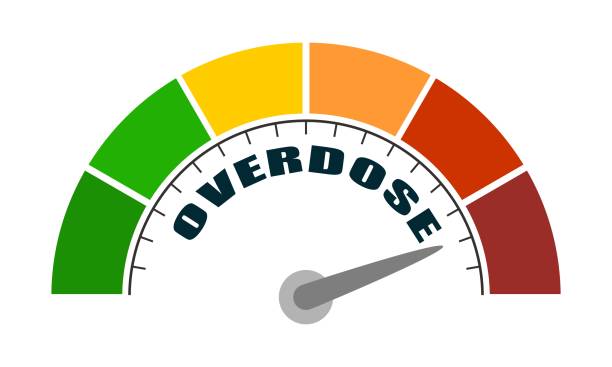
Immediate Steps and Treatment
When someone takes much of a substance, acting quickly is crucial. Here are the immediate steps that need to be taken in situations:
- Contact Emergency Services: Time is significant when dealing with overdoses.
- Consider Gastric Lavage: This procedure, commonly known as stomach pumping, may be necessary depending on the situation.
- Administer Antidotes: Medications available can counteract the effects of the substance overdose.
These actions can help minimize harm and stabilize the patient's condition until they receive further medical treatment.
Storage and Handling Precautions
Optimal Storage Conditions
It is crucial to follow storage guidelines to ensure that pharmaceutical products maintain their quality and effectiveness. The ideal conditions typically include:
- Temperature Control: Extreme heat or cold can cause the active compounds to lose effectiveness.
- Humidity: High levels of moisture can accelerate the degradation process of medications.
- Light Exposure: Certain drug formulations are susceptible to degradation when exposed to light.
Therefore, storing them in a climate-controlled environment is generally advised, with humidity and light exposure.

Shelf Life
Medications naturally have a lifespan, after which their effectiveness may decrease. Several factors influence this shelf life, including the compounds' stability and the type of packaging. Airtight and opaque containers are known to help extend the shelf life of medications. It's essential to be cautious when using drugs closer to their expiration date. While proper storage conditions can maximize the lifespan, they cannot guarantee the preservation of the effectiveness of a medication.
Conclusion
Summary of Key Points
To summarize, the article discussed the seriousness of contraindications, the symptoms, necessary actions in case of an overdose, and the importance of proper storage and handling of pharmaceutical products.
Final Thoughts and Recommendations
It is crucial to follow the guidelines mentioned here not as a precautionary measure but as an essential requirement for ensuring safe and effective treatment. It is highly recommended to consult with a qualified healthcare provider to receive recommendations and gain a better understanding.









